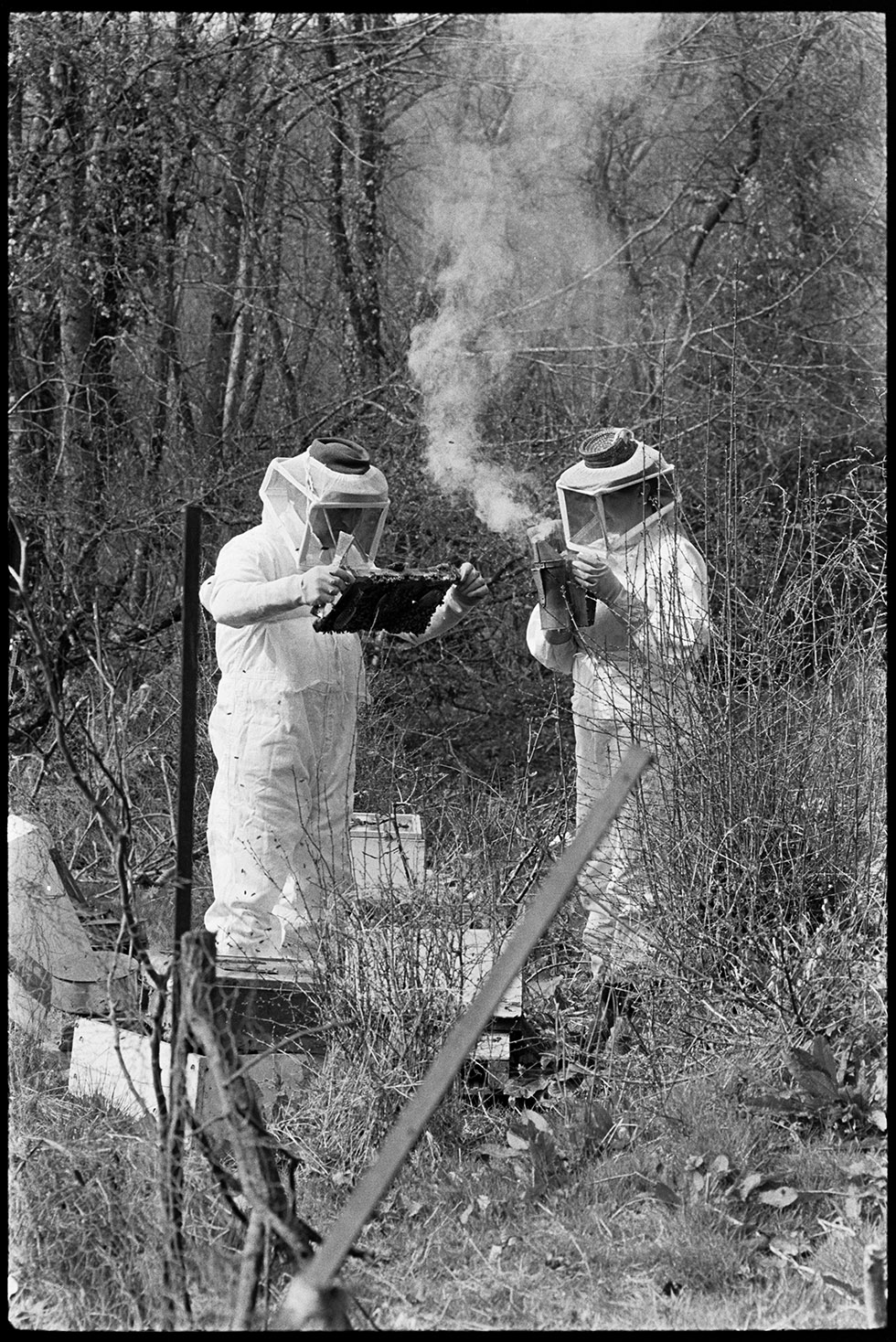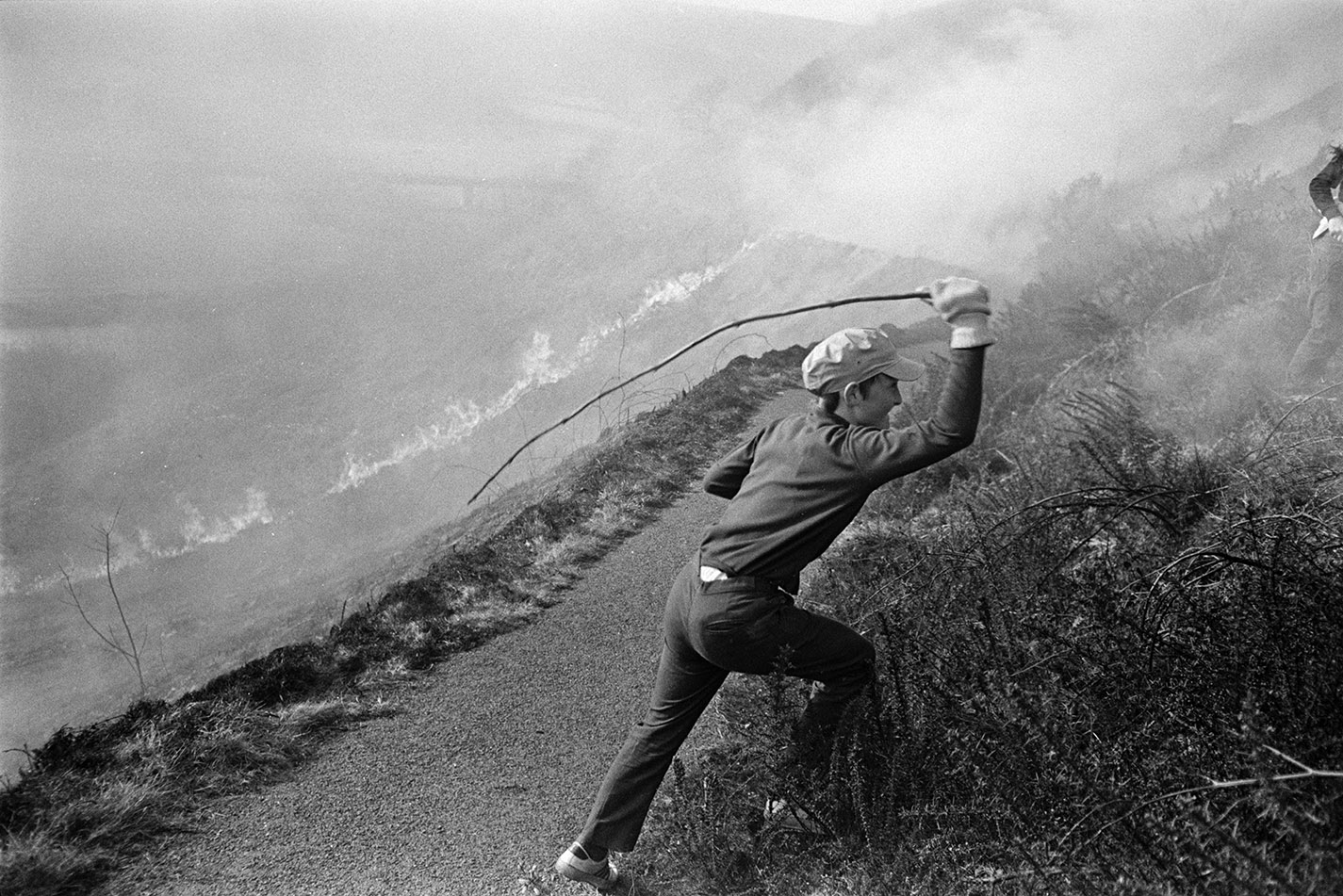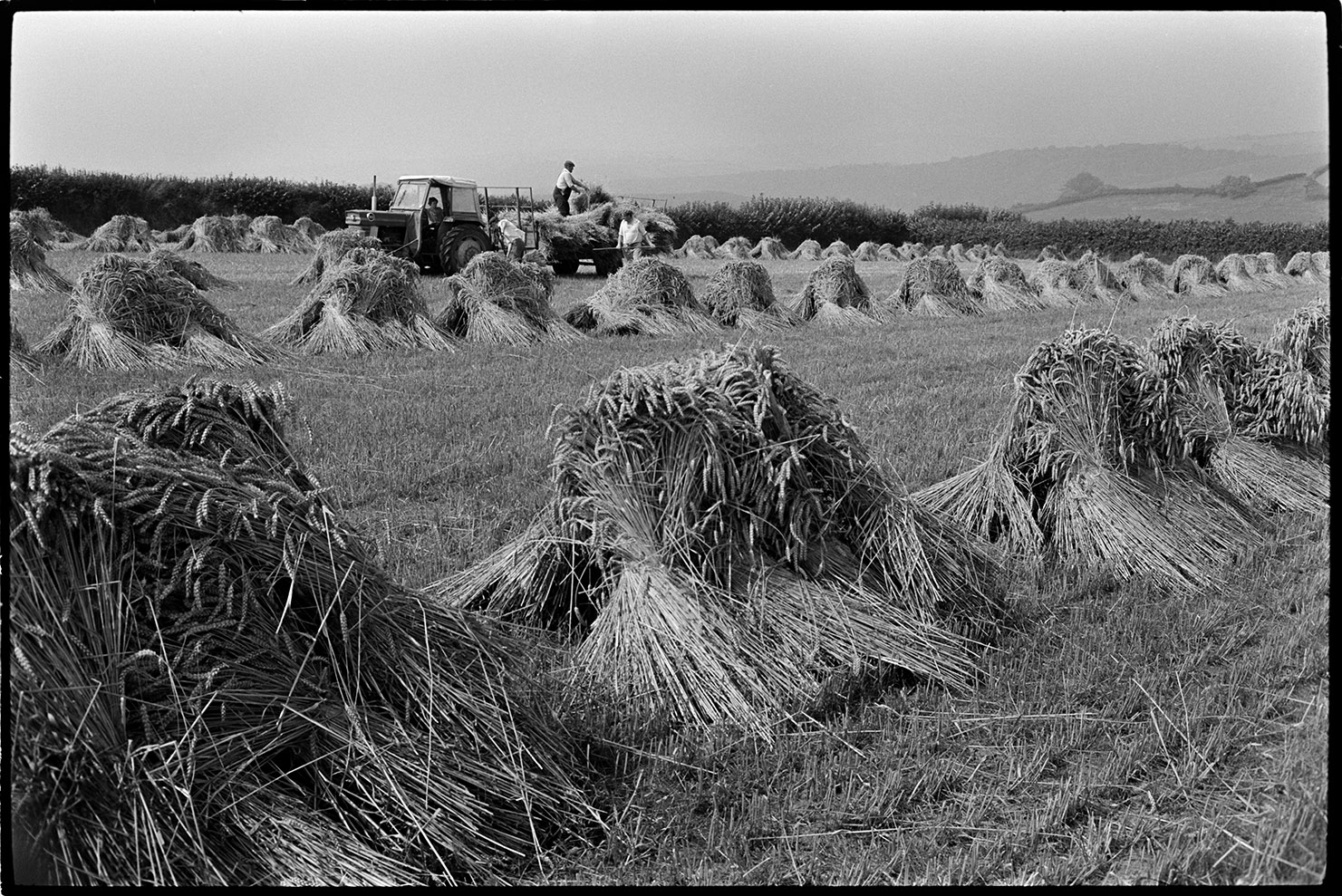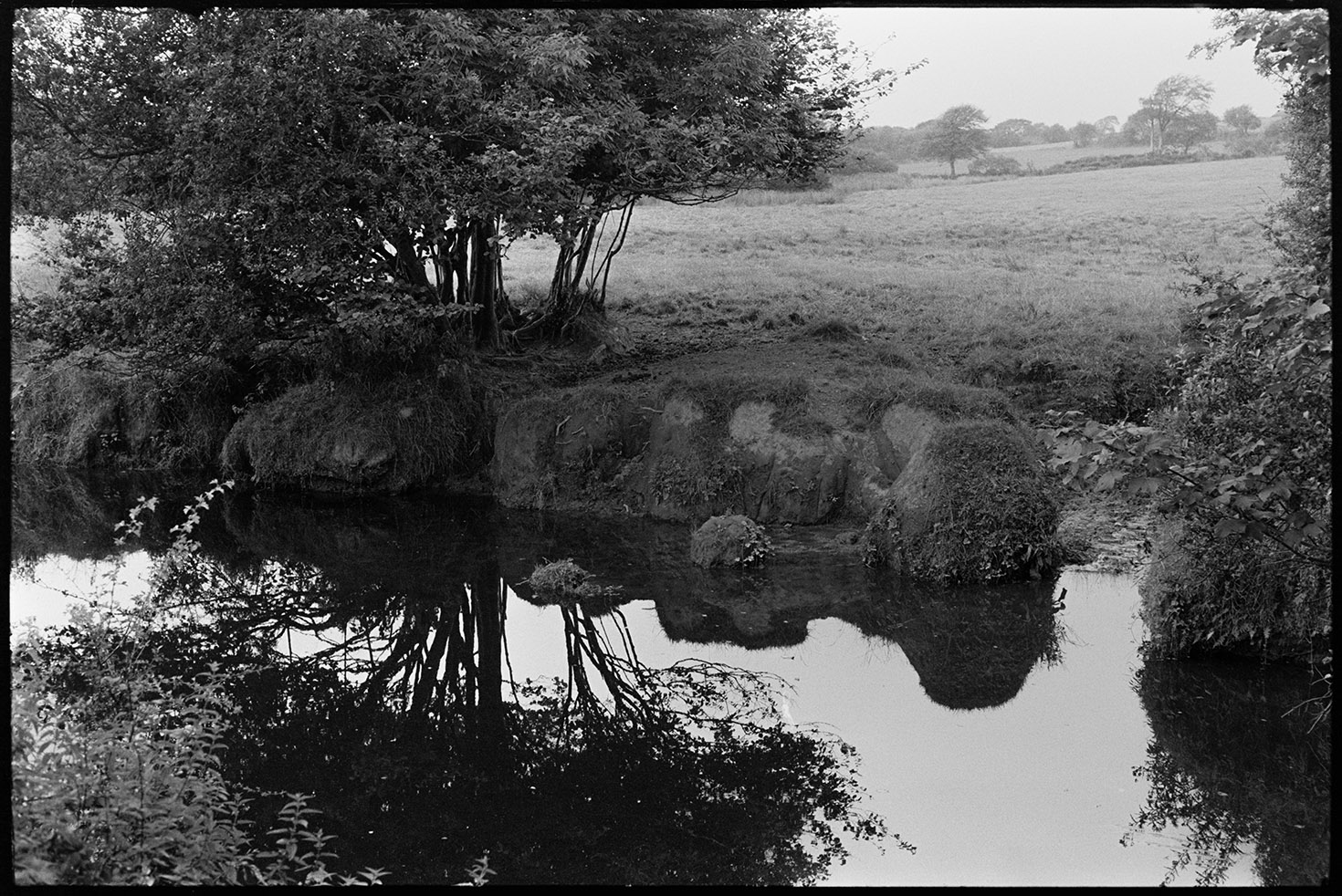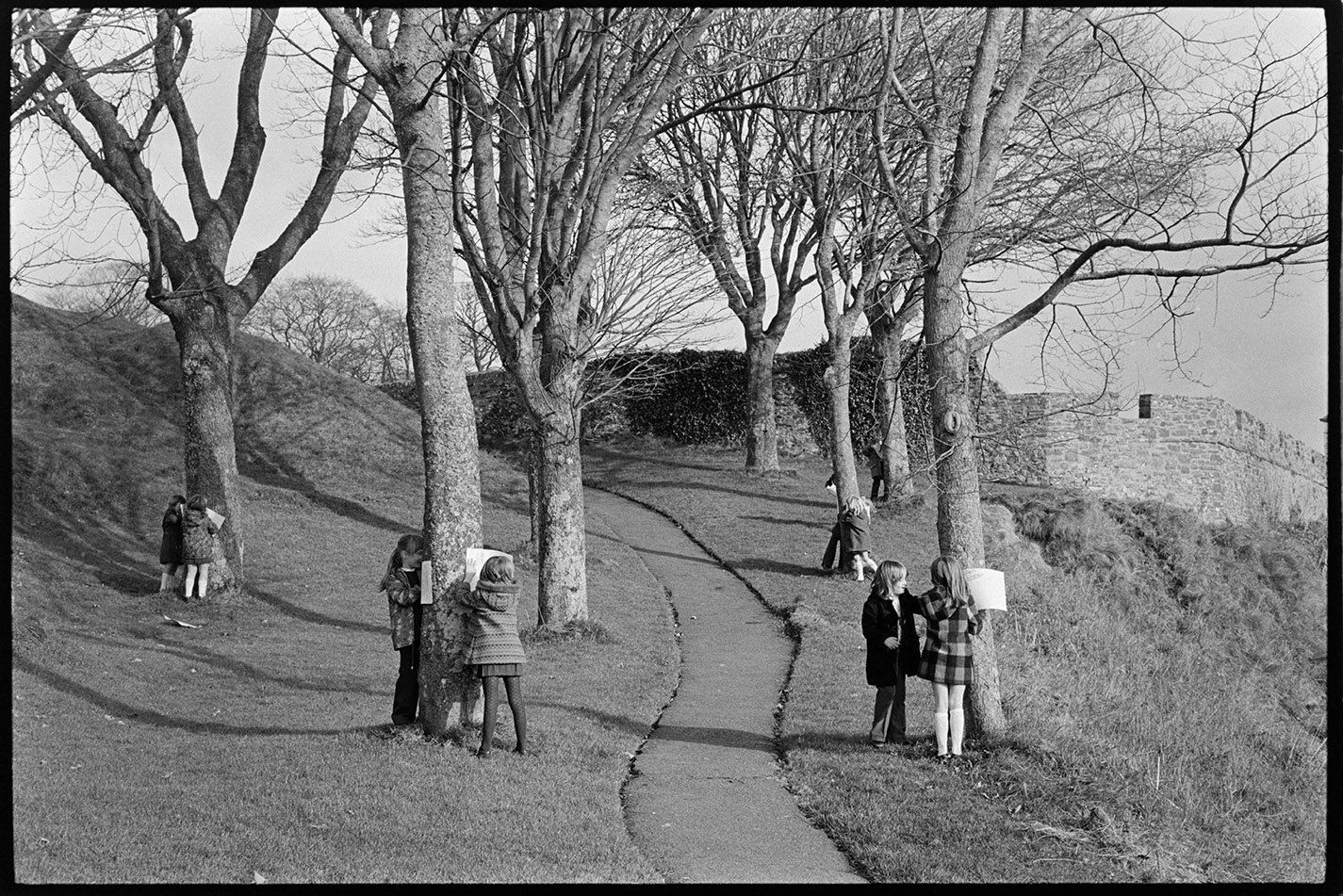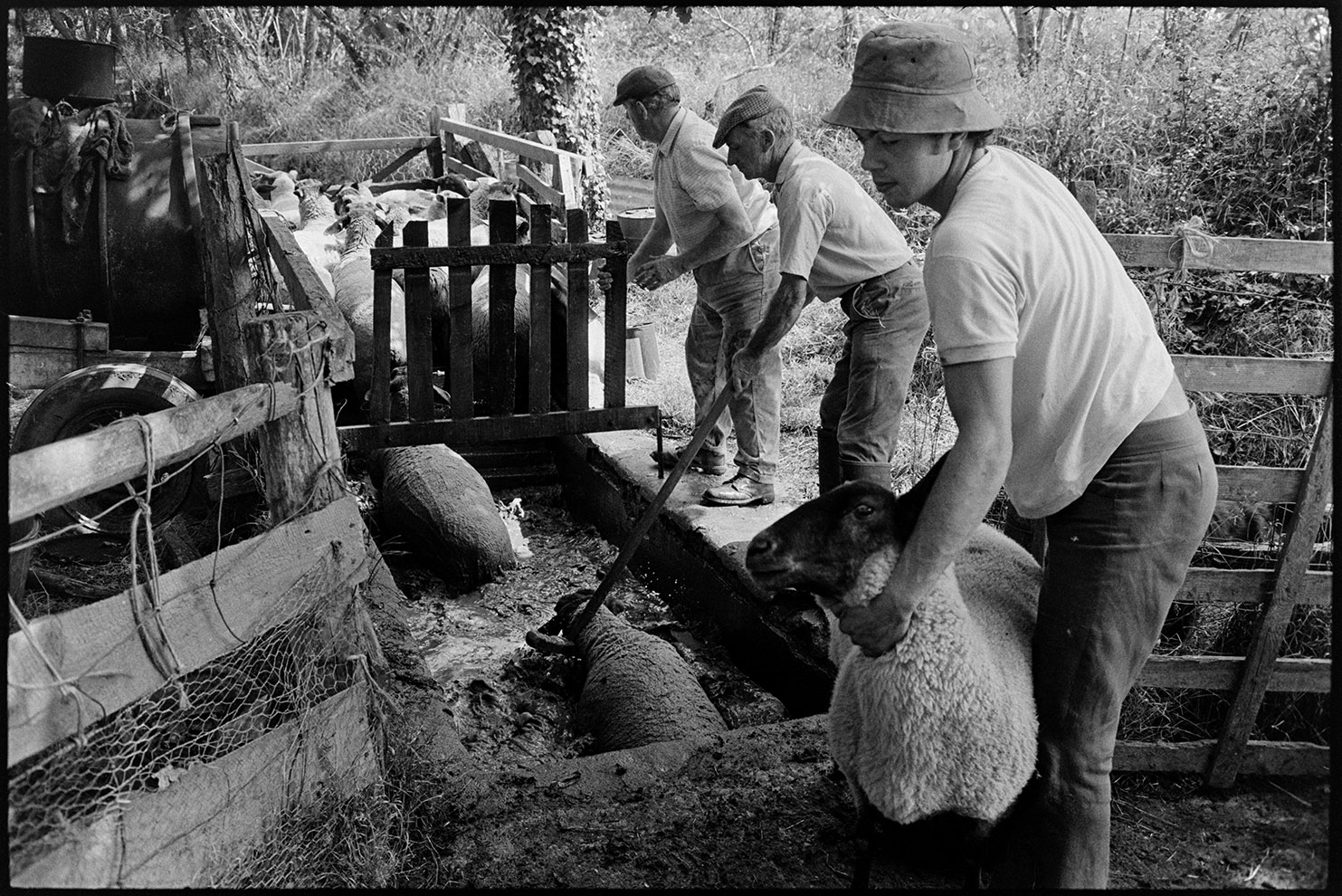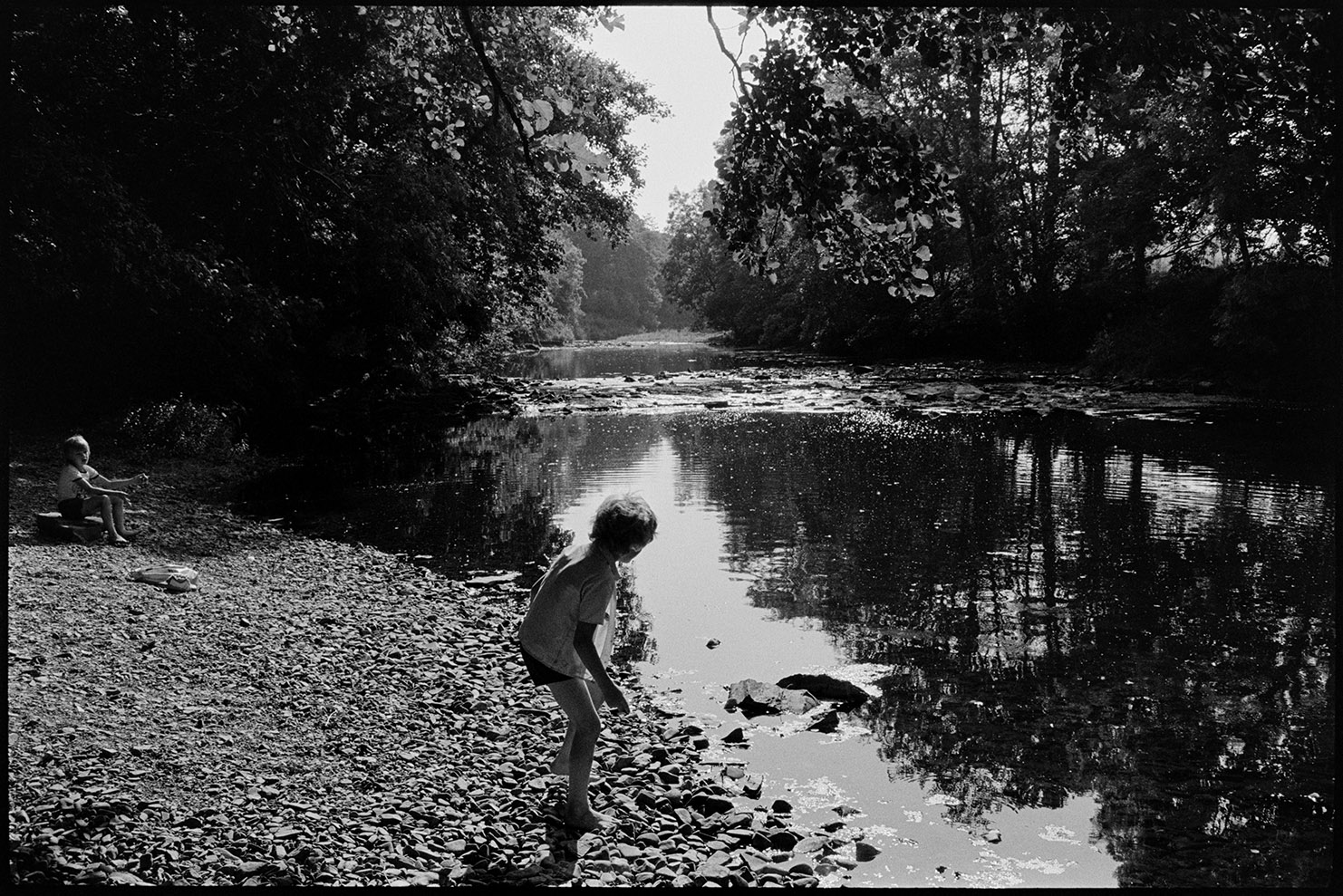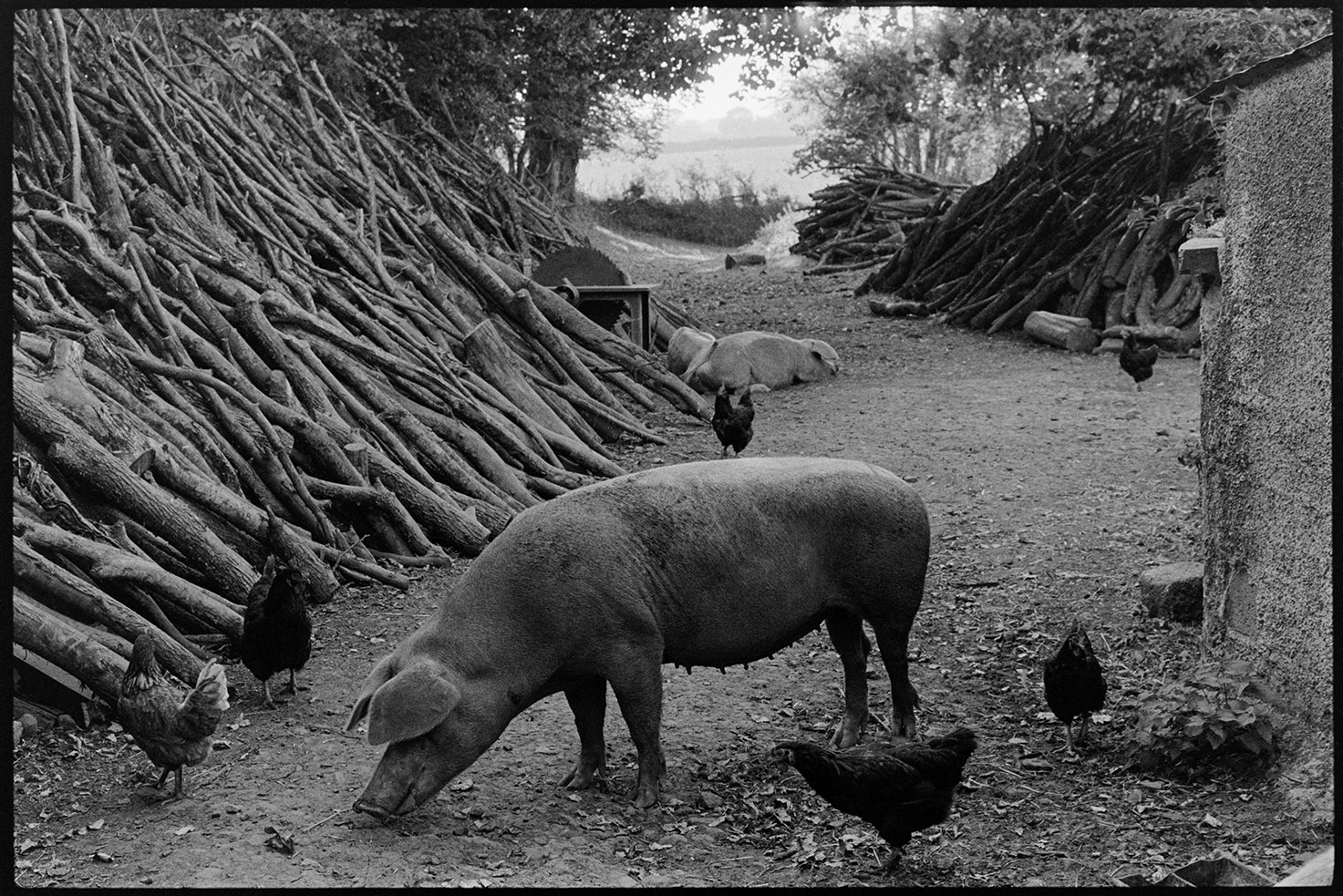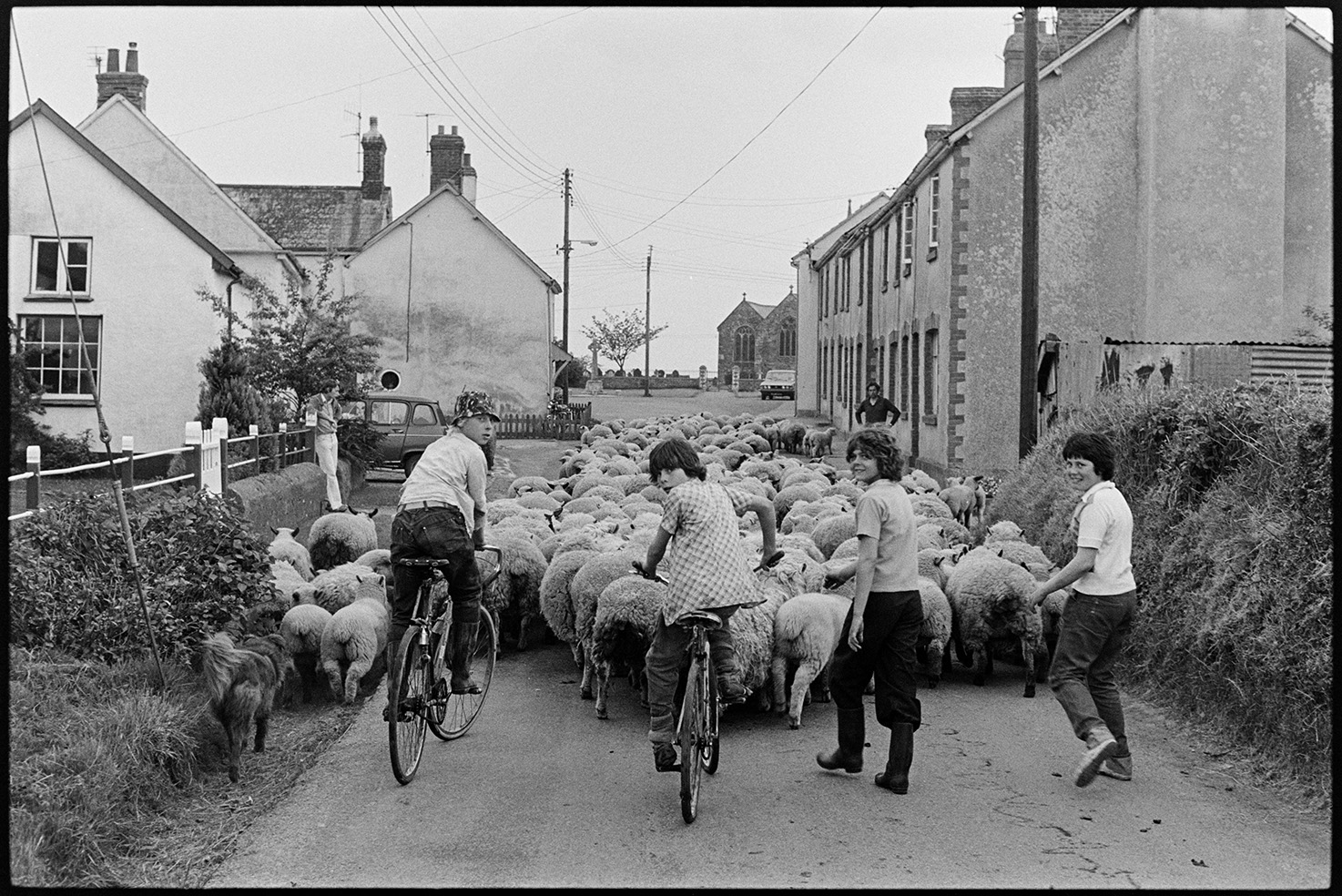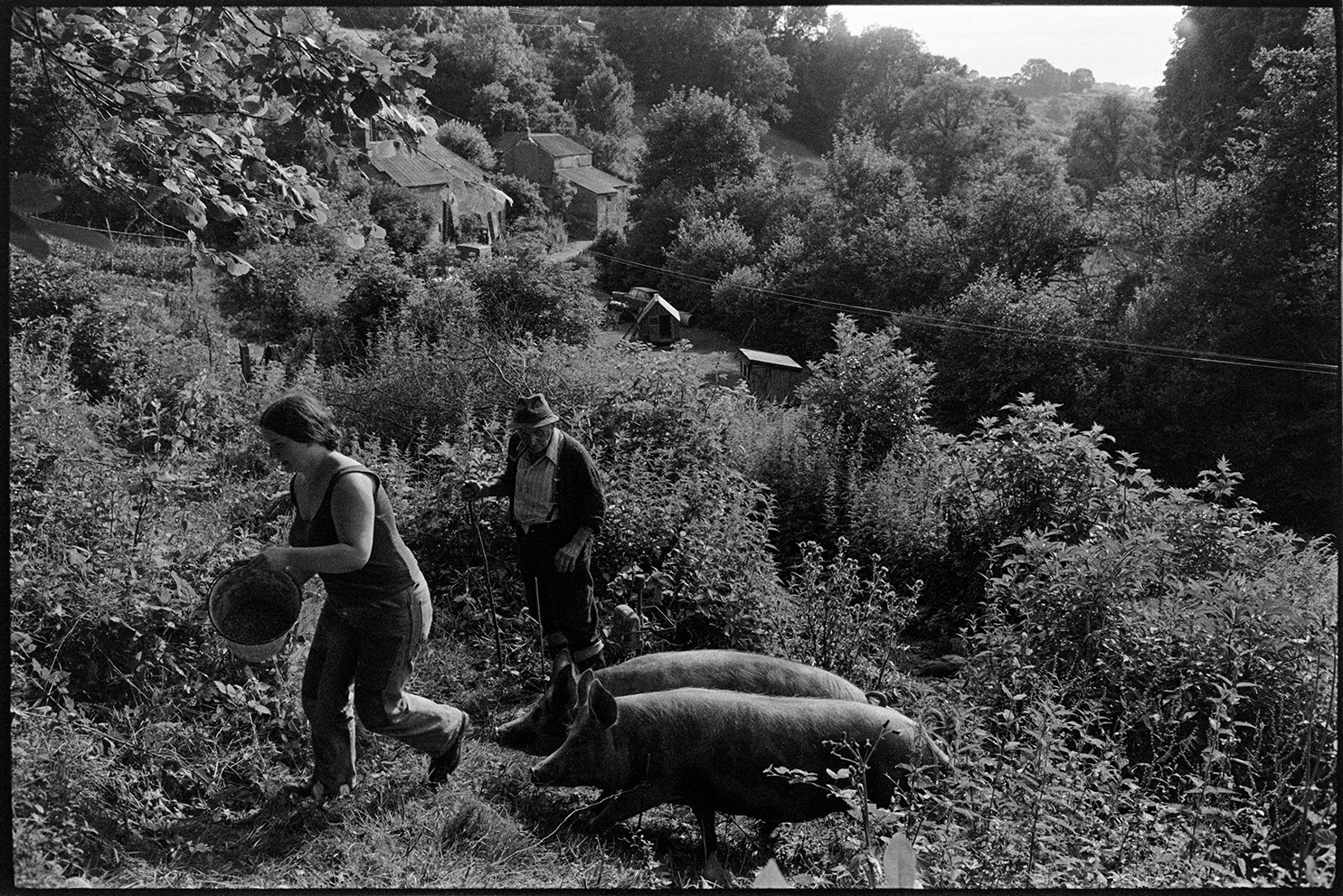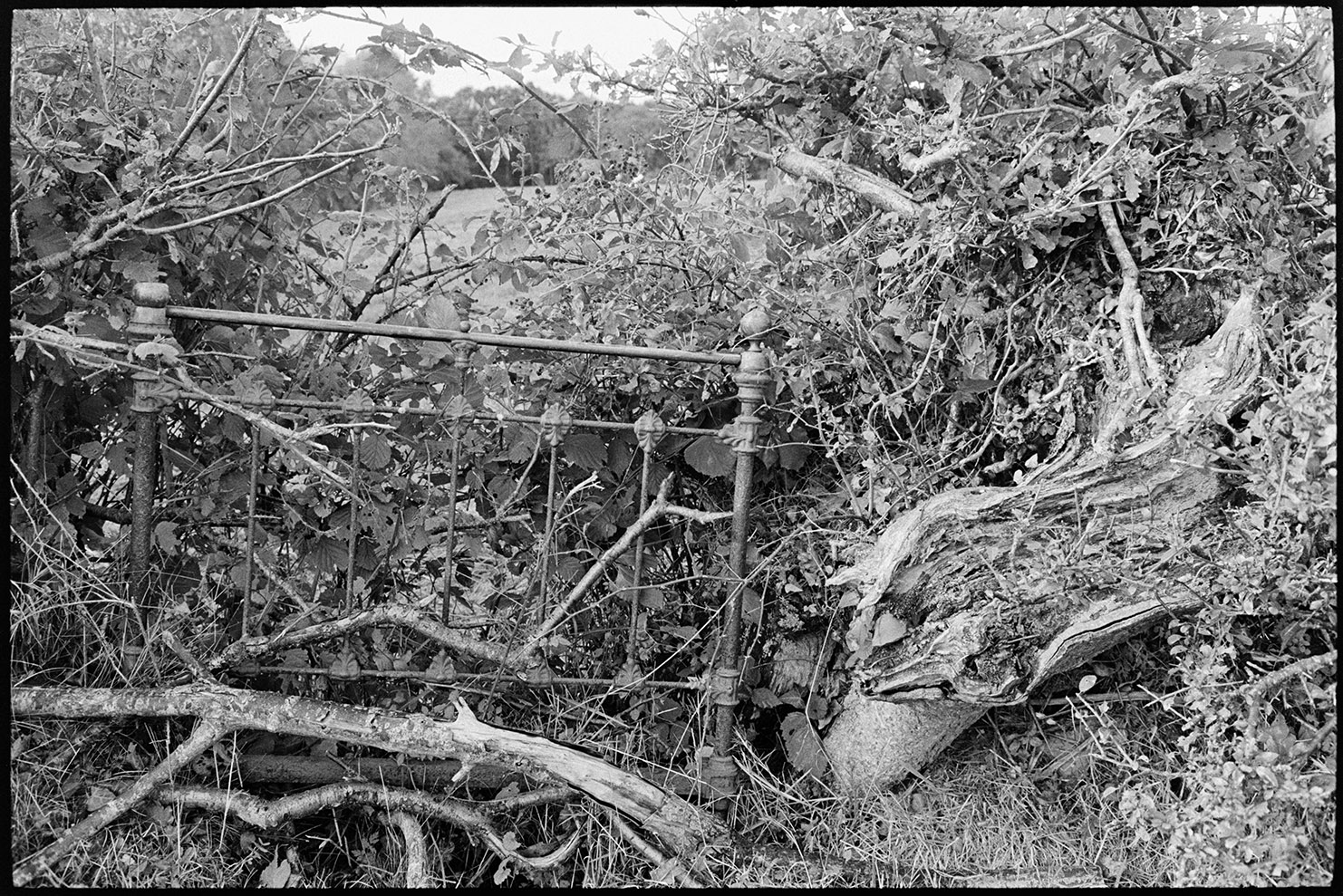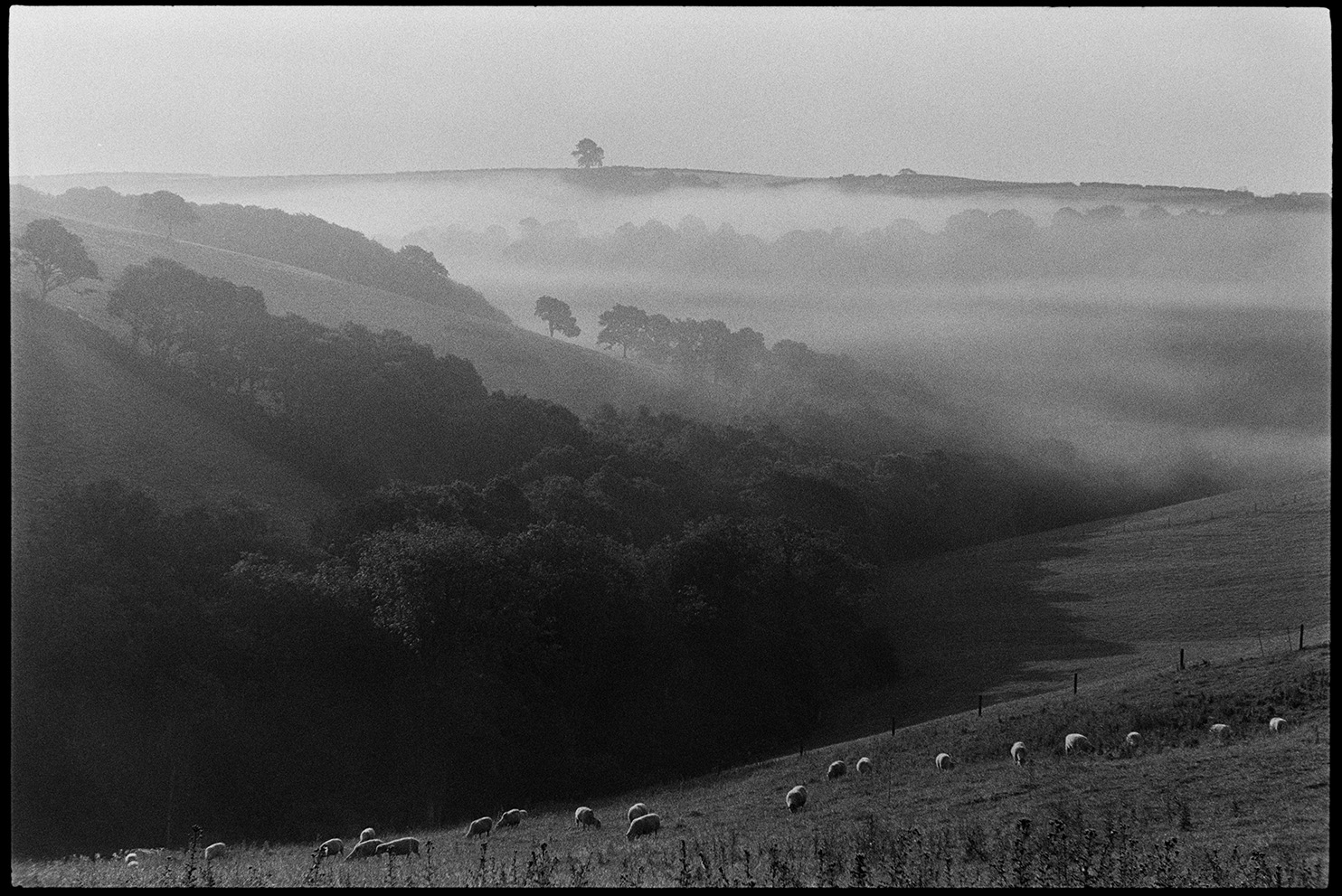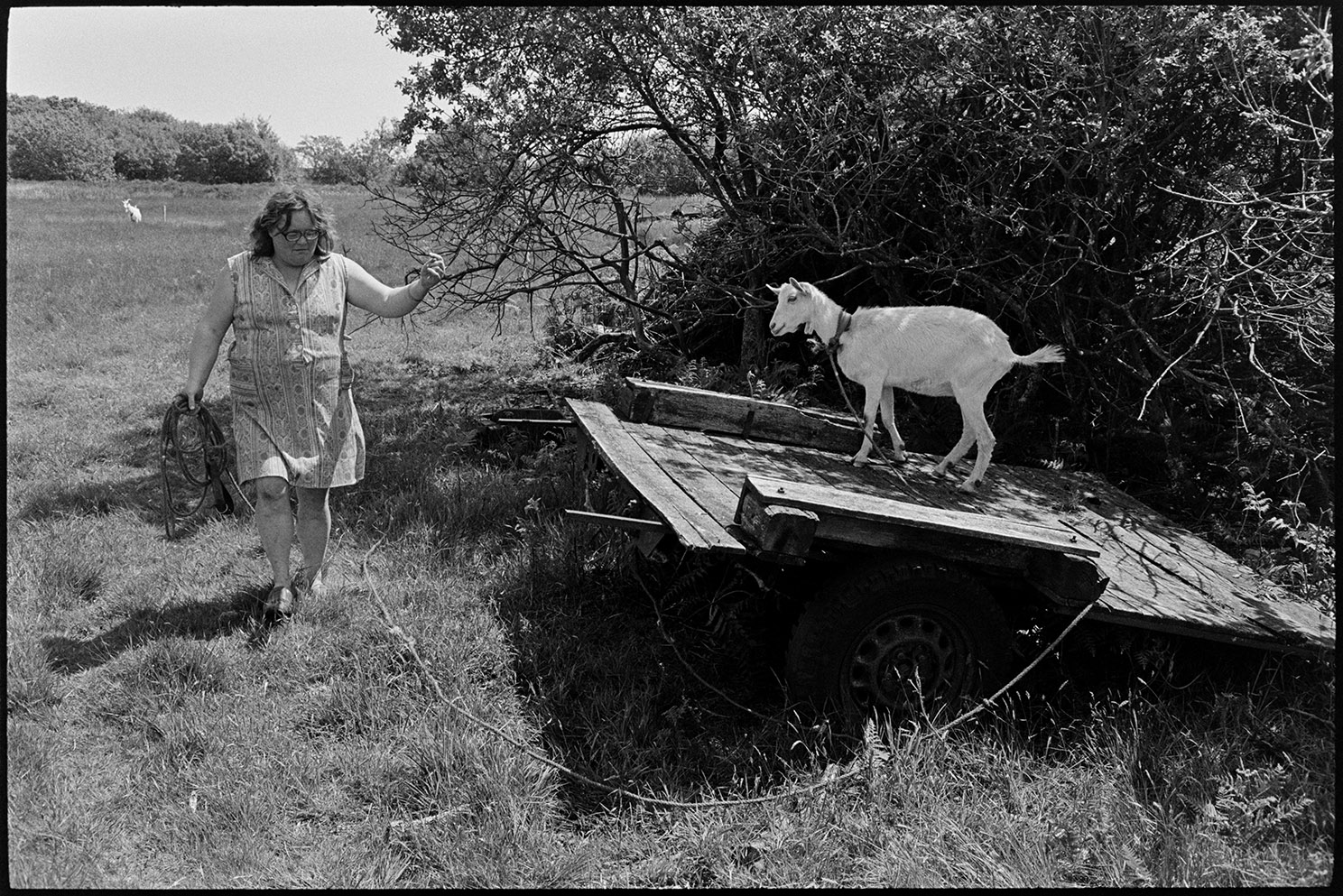Our Land
‘In the early 1970s, just as James Ravilious was beginning his long stint as photographer-in-residence at the Beaford Centre, I was studying for a degree in agriculture. Had I seen the below images at the time, I would have been astounded to learn that they were exactly contemporary. Such practices had no place in my vision of a technology-driven modern English agriculture for which my course was preparing me, and that I had experienced in pre-college work on Kentish farms.
In one narrow sense I would have been right: Ravilious wanted to record aspects of country life before they were lost forever, and so his pictures of corn-stooking, hand-milking, horse-ploughing, etc. are of practices which were already arcane, and which survived only in tiny patches for specialist reasons. Modern tractors, field machinery and milking machines do not feature heavily in the Ravilious opus, though (as these quotations confirm) the pace of technological change was rapid in much of North Devon as elsewhere, assisted by government grants and tax incentives.
But this would have missed the point. Ravilious recorded what was there in his patch, in all its rich tapestry. Above all he shows us the cold, dirty, exhausted and often exuberant humanity of farming in an area heavily constrained by geology, climate and remoteness, where modern technology cannot supply all the answers. He shows us the importance of developing a multi-faceted comprehension of farming and the people that sustain it, rather than relying on one-size-fits-all approaches developed elsewhere. All that has been lacking, up to now, is for the farming people of North Devon to add their voices to the images, to help us and future generations further enrich our understanding... ‘
Martyn Warren
Trustee and Chair of Hidden Histories Project Board, Beaford
The quotes below are taken from a group Oral History interview which used photos from the Archive to inspire conversations about farming practices and land management.
Jackdaw. Documentary photograph by Roger Deakins for the Beaford Archive © Beaford Arts
“I remember it being massively different from where it is now. Agricultural practices were perhaps not as developed as they were upcountry but there were massive changes. The pace of change was there but not as speedy.”
“By the 50s, there were very few horses left. I borrowed a Fergie from Exeter to do a job that would prove to my father he ought to buy one. He used it for 2 days and it did the work that he could do in a month. He bought one.”
Man ploughing with two horses - Seymour Husbands, Charles, Sandy Park, June 1975. Documentary photograph by James Ravilious for the Beaford Archive © Beaford Arts
Documentary photograph by Roger Deakins for the Beaford Archive © Beaford Arts
“You could sell one or two lambs in the 60s - 70s and that would pay a man’s wages. Whereas now you’d be lucky to pay a day’s wages on selling a lamb. The same goes for a litre or gallon of milk and all commodities. The real price in relation to the cost of living has gone down and down so you’ve got to do more and more to make a living. Then you’ve got to have more acres and this encourages mechanisation and the whole thing snowballs. Most of this is driven by the pure economics of the job. You’ve got to keep more to pay the bills.”
“There’s going to be a bigger change in the next ten years then there’s been in our lifetime. Nobody milks a cow now. A machine does all the work. One man looks after a hundred cows… we access cow details sitting here on our phone.”
Gordon Sanders milking cow by hand, Ashreigney, Reynards Park, April 1978. Documentary photograph by James Ravilious for the Beaford Archive © Beaford Arts
Planting flatpoles, near Dolton, May 1975. Documentary photograph by James Ravilious for the Beaford Archive © Beaford Arts
“Ten years ago we got our first GPS tractor so we can spread more fertiliser wider and drive more accurately. Now that’s mainstream. It’s not a leap to see how that tractor can be driven remotely, on its own. It’ll happen here soon.”
“We were licensed at that time to go around the farms and colour potatoes in the clamps because they were not allowed to sell them for human consumption. They had to be used for animal feed…. we had to colour the wheat so it couldn’t be sold for bread. During that period, about 5 - 6 years, we were over-producing food in this country and it’s this time that tractors were making farmers’ lives easier and things were going up… there was so much surplus!”
Documentary photograph by Roger Deakins for the Beaford Archive © Beaford Arts
Iddesleigh, Parsonage, Aug 1976? Documentary photograph by James Ravilious for the Beaford Archive © Beaford Arts
“One of the big problems we have in North Devon is soil compaction which is a serious issue in a pollution sense as stuff applied to the land will mostly run off… Issues of soil health are much more known about these days. The increase in mechanisation and increase in the size of machinery and efficiency in more difficult conditions… all of these things tend towards increasing problems which are quite invisible when you look at these images.”
“You’re a custodian of the land you own for your life and you aim to hand it over to the next generation better than how you took it on. That’s the attitude of most family farms.”
Farmer using old seed drill. Beaford, Balls Farm, June 1975. Documentary photograph by James Ravilious for the Beaford Archive © Beaford Arts
Man cutting beet and loading on trailer, Roborough, October 1975. Documentary photograph by James Ravilious for the Beaford Archive © Beaford Arts
“Things change, views change , fashions change and pressures change but there is continuity within farming families and that continuity being lost in one of the biggest threats to our land. I believe there’s huge value in that continuity of working with the land and we’re lucky to have a lot of that continuity in Devon.”

